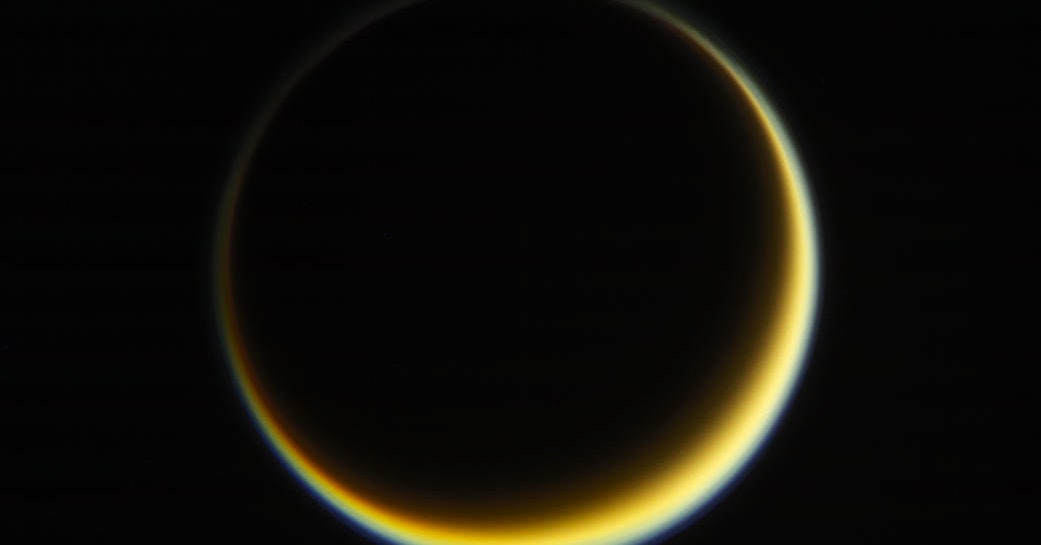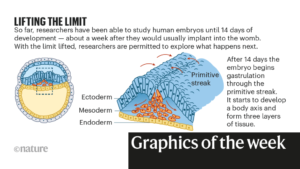Titan’s Strange Chemical World Gets Simulated in Tiny Tubes
The panorama of Titan, Saturn’s largest moon, is each acquainted and tremendous unusual. Like Earth, Titan has rivers, lakes, clouds, and falling raindrops, in addition to mountains of ice and a thick environment. But as a substitute of water, Titan’s chemical cycle consists of liquid methane, an natural molecule comprised of one carbon and 4 hydrogen atoms. Researchers imagine this swirling combination of methane, mixed with the moon’s nitrogen-laden environment, floor water ice, and possibly some vitality from both a volcano or a meteor affect, may need been the right recipe to create some type of easy life kind. That’s why Titan is likely one of the potential sizzling spots for all times in the Solar System, together with Jupiter’s icy moon Europa.

The panorama of Titan, Saturn’s largest moon, is each acquainted and tremendous unusual. Like Earth, Titan has rivers, lakes, clouds, and falling raindrops, in addition to mountains of ice and a thick environment. But as a substitute of water, Titan’s chemical cycle consists of liquid methane, an natural molecule comprised of one carbon and 4 hydrogen atoms. Researchers imagine this swirling combination of methane, mixed with the moon’s nitrogen-laden environment, floor water ice, and possibly some vitality from both a volcano or a meteor affect, may need been the right recipe to create some type of easy life kind. That’s why Titan is likely one of the potential sizzling spots for all times in the Solar System, together with Jupiter’s icy moon Europa.
Several expeditions are getting ready to launch to those faraway worlds in the approaching decade: a European mission to Europa in 2022, NASA’s Europa Clipper in 2024, and the revolutionary NASA Dragonfly copter to Titan in 2027.
But earlier than these spacecraft depart, scientists wish to get an thought of how planetary chemistry on these moons work. Now a researcher has recreated Titan’s atmosphere in a small glass cylinder and blended natural chemical substances underneath the identical temperature and stress situations discovered on that moon. Organic molecules which can be liquid on Earth—equivalent to methane and benzene—grow to be strong icy mineral crystals on Titan as a result of it’s so chilly, generally all the way down to -290 Fahrenheit, based on Tomče Runčevski, an assistant professor of chemistry at Southern Methodist University, and the principal investigator on the experiment introduced this week on the American Chemical Society assembly.
In a collection of experiments, Runčevski took tiny glass tubes, sucked the air out of them with a pump, and added water ice. Then, one by one, he added nitrogen, methane, its chemical relative ethane, and different natural compounds. Each time, he various the composition of the chemical combination contained in the glass cylinders to see what would occur. He subsequent utilized stress—equal to about 1.45 instances Earth’s environment—and lowered the temperature by surrounding the vials with extraordinarily chilly air.
(adsbygoogle = window.adsbygoogle || []).push({});
“We introduce a sequence of chemicals the way they would be introduced on Titan,” Runčevski says. “First we would put [the glass tube] in a vacuum to get away all the oxygen, then we put in methane to mimic the atmosphere on Titan. And then we put in the other organic molecules and we study them.”
Under that moon’s atmospheric stress and temperature, he discovered that two natural molecules considerable on Titan and poisonous to people right here on Earth—acetonitrile and propionitrile—grow to be a single crystalline kind. On Titan, these two molecules are shaped by the mixture of nitrogen and methane, plus vitality from the solar, Saturn’s magnetic discipline, and cosmic rays. Acetonitrile and propionitrile begin as a fuel in the environment, then condense into aerosols, after which rain down onto the moon’s floor and grow to be chunks of strong minerals in a number of types.
I perceive should you’ve reached chemistry overload. But should you care about biology, or extra exactly exobiology, the science of life on other planets, then the form and type of chemical compounds are crucial. It’s the primary time that these two chemical substances have been mixed right into a crystal form on Earth underneath the situations current on Titan.
Another necessary discovering is that the outer aspect of the crystal additionally has a slight electrical cost, or polarity, on its floor. That floor cost can entice different molecules equivalent to water—which might be essential to kind the constructing blocks of carbon-based life.
This new experiment doesn’t show that there’s life on Titan, however it signifies that researchers can uncover new issues about its bizarre, frigid floor atmosphere even earlier than the NASA Dragonfly spacecraft lands there. “We cannot say there is or there is not life on Titan, but we can definitely say that the conditions for life are there,” Runčevski says. “Titan is the closest thing to Earth that can harbor life in a way that we would perceive it as similar to life on Earth.”



